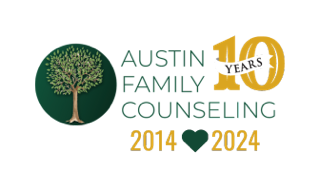In my last post, Bruce to Caitlyn: Understanding Gender Identity, I began a response to the recent Bruce Jenner interview with Diane Sawyer and offered some basic information about gender identity, societal influence and the gender binary, and the inclusive gender spectrum. Here, I am following up with some specifics around pronouns, terms, & other gender identity resources.
Pronouns
Now that Jenner has officially emerged publicly as Caitlyn Jenner, I will be referring to her as Caitlyn and will use “her” and “she” rather than “him” or “he.” The use of preferred pronouns and transgender individuals is something clients, colleagues, & friends often ask about. When someone identifies as non-binary or gender non-conforming the pronouns “he” or “she” may not feel like a fit either. There are several gender neutral or gender inclusive pronouns that people choose to utilize instead. Here is a chart with some examples.
 If you are unsure of what pronoun someone prefers the best thing is to simply politely. This cartoon effectively illustrates the pronoun issue in which I’m referring.
If you are unsure of what pronoun someone prefers the best thing is to simply politely. This cartoon effectively illustrates the pronoun issue in which I’m referring.
What is Transitioning?
Transitioning refers to the process an individual goes through to discover and or affirm their gender identity. This is a long-term journey that may take many years. This process is also unique to the individual in that some trans people do not have the means or resources for surgery and some do not have a strong desire or need to “medically transition.” There tends to be two aspects to transitioning:
- Social and legal transition: Change of name, pronoun selection, cosmetic modifications to appearance, dress, changes to an individual’s vocal tone, etc.For many people, this will also entail legal changes to their name and gender marker on identification documents like driver’s licenses and passports.
- Medical transition: The introduction of hormones (testosterone for trans men, estrogen and testosterone blockers for trans women) into the body. For some people, it will also involve surgical procedures that align the physical body with one’s gender identification. These may include “top” surgery, “bottom” surgery, and, for trans women, facial feminization.
Other Terms
Hormone Replacement Therapy (HRT): Introduces hormones associated with the gender that the patient identifies with (notably testosterone for trans men and estrogen for trans women).
MTF: male-to-female. Indicates a transgender individual who was originally assigned the gender of male at birth, but has claimed a female identity through clothing, surgery, or attitude changes
FTM: female-to-male. Indicates a transgender individual who was originally assigned the gender of female at birth, but has claimed a male identity through clothing, surgery, or attitude changes.
“T” word: I’ve found that either “trans” or “transgender” are appropriate when referring to someone who identifies outside of their assigned gender. The word “tranny” is not generally accepted and some find it to be very offensive. It has historically been used as a slur but some are embracing it in the same way “queer” has evolved into a more empowering word that the LGBTQ community not utilizes in a positive way. Since the term has been perceived as offensive, I would say it is best to proceed with caution and should be assessed on a case-by-case basis rather than used as a general term describing transgender individuals.
Overall when it comes to terminology & pronouns consider the Platinum Rule: treat people as they’d like to be treated (vs. the Golden Rule: treat people as you’d like to be treated).
Don’ts
I typically feel that when we come from a respectful, genuine, & compassionate place most questions or mistakes are easily repaired. However, there are some questions that are generally considered to be off limits despite good intentions. I like to keep the Platinum Rule in mind here as well. Here are a few that should be avoided (remember you can always Google things you are curious about):
- Do not ask how people have sex. I don’t want to be asked this, as a cisgender individual, so it’s safe to assume a trans individual doesn’t either.
- Do not ask to see pre-transition photos or ask about who a person “used to be” (ie name etc.). When we start from the place of accepting people for who they say they are, knowing how they once were is not significant. Yes, you may be very curious how someone may have looked before, but it is in the past and many trans people prefer to leave that in the past (not unlike my preference to not share photos of myself from middle school).
- Do not ask about a person’s surgical status or body parts. Some things are private and should only be talked about if someone brings it up on their own. Not every trans person has the desire or the means to make surgical changes, and this does not mean that they are any less trans. Understanding someone’s gender is not contingent upon understanding what happens “down there.”
- Do not ask when a person “became” transgender. This question implies that there is a choice related to gender identity. As with the gay, lesbian, & bisexual coming out process, the trans coming out process can be long and challenging. No one suddenly “becomes” trans any more than they “turn” gay or lesbian.
There are many organizations and gender identity resources where you can gain more information and access support for yourself or others, some of which can be found on our website. In my next post, I plan to share some ways that you can be an ally to the transgender community.












